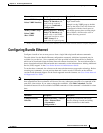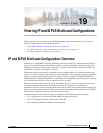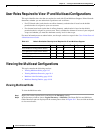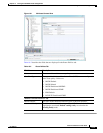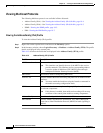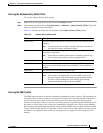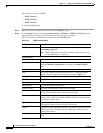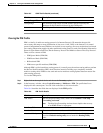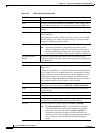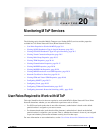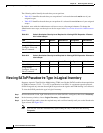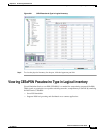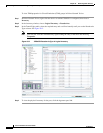
19-7
Cisco Prime Network 4.0 User Guide
OL-29343-01
Chapter 19 Viewing IP and MPLS Multicast Configurations
Viewing the Multicast Configurations
Viewing the PIM Profile
PIM is a family of multicast routing protocols for Internet Protocol (IP) networks that provide
one-to-many and many-to-many distribution of data over a LAN, WAN or the Internet. It is termed
protocol-independent because PIM does not include its own topology discovery mechanism, but instead
uses routing information supplied by other traditional routing protocols such as the Routing Information
Protocol, Open Shortest Path First, Border Gateway Protocol and Multicast Source Discovery Protocol.
There are four variants of PIM:
• PIM Sparse Mode (PIM-SM)
• PIM Dense Mode (PIM-DM)
• Bidirectional PIM
• PIM source-specific multicast (PIM-SSM)
Although PIM is called a multicast routing protocol, it actually uses the unicast routing table to perform
the Reverse Path Forwarding (RPF) check function instead of building up a completely unrelated
multicast routing table. PIM does not send and receive multicast routing updates between routers like
other routing protocols.
To view the PIM profile:
Step 1 Right-click on the required device and choose the Inventory option.
Step 2 In the Inventory window, choose Logical Inventory > Multicast > PIM. The profile details are
displayed in the content pane. You can click on the tabs to view more details.
Table 19-6 describes the fields that are displayed in the PIM profile.
Group Ranges Tab
Group Range The multicast group range in CDIR format, which is basically the
Multicast Group IP address followed by the CDIR prefix.
Protocol The PIM protocol that is used by the IGMP group range.
Table 19-5 IGMP Profile Details (continued)
Field Name Description
Table 19-6 PIM Profile Details
Field Name Description
NSF Status The non-stop forwarding status, which can be Normal or Non-Stop
Forwarding Activated.
Note The Non-Stop Forwarding Activated status implies that recovery
of an IGMP failure is in progress.
Interfaces Tab
Interface Name The name or ID of the interface on which PIM is enabled.
Associated Entity The link to the associated entity, which when clicked will highlight the
associated Default routing entity record under the Routing Entity
node.



